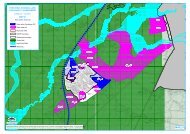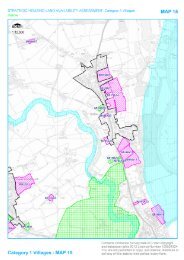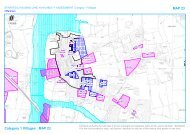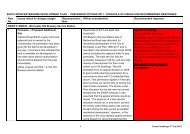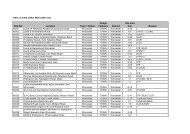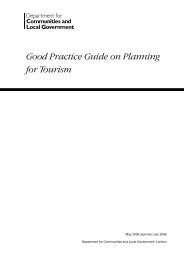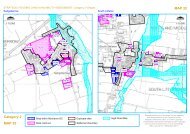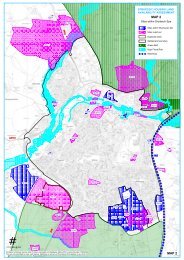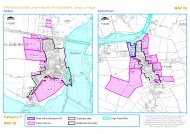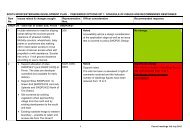Strategic Flood Risk Assessment - South Worcestershire ...
Strategic Flood Risk Assessment - South Worcestershire ...
Strategic Flood Risk Assessment - South Worcestershire ...
You also want an ePaper? Increase the reach of your titles
YUMPU automatically turns print PDFs into web optimized ePapers that Google loves.
Local planning bodies should:Promote the use of SUDS for the management of run offEnsure their policies and decisions on applications support and compliment the buildingregulations on sustainable rainwater drainage, giving priority to infiltration over firstwatercourses, then sewersIncorporate favourable policies within development plansAdopt policies for incorporating SUDS requirements into Local Development DocumentsEncourage developers to utilise SUDS wherever practicable, if necessary, through theuse of appropriate planning conditionsDevelop joint strategies with sewerage undertakers and the Environment Agency tofurther encourage the use of SUDS8.7 Reducing flood riskThe minimum acceptable standard of protection against flooding for new property within floodrisk areas is 1% annual probability for fluvial flooding and a breach during a 0.5% annualprobability tidal event, with allowance for climate change over the lifetime of the development.The measures chosen will depend on the nature of the flood risk. Some of the more commonmeasures include:8.7.1 Reducing <strong>Flood</strong> <strong>Risk</strong> through Site Layout and Design<strong>Flood</strong> risk should be considered at an early stage in deciding the layout and design of a site toprovide an opportunity to reduce flood risk within the development. A number of the <strong>South</strong><strong>Worcestershire</strong> proposed allocations cover all three <strong>Flood</strong> Zones.The NPPF states that a sequential, risk-based approach should be applied to try to locate morevulnerable land use to higher ground, while more flood-compatible development (e.g. vehicularparking, recreational space) can be located in higher risk areas. However vehicular parking infloodplains should be based on nature of parking, flood depths and hazard including evacuationprocedures and flood warning.Waterside areas, or areas along known flow routes, can be used for recreation, amenity andenvironmental purposes, allowing the preservation of flow routes and flood storage, and at thesame time providing valuable social, economic and environmental benefits contributing to othersustainability objectives. Landscaping should ensure safe access to higher ground from theseareas, and avoid the creation of isolated islands as water levels rise.8.7.2 Modification of Ground LevelsModifying ground levels to raise the land above the required flood level is a very effective way ofreducing flood risk to the site in question, particularly where the risk is entirely from tidal floodingand the land does not act as conveyance for flood waters.However, in most areas of fluvial flood risk, conveyance or flood storage would be reduced byraising land above the floodplain, adversely impacting on flood risk downstream. Compensatoryflood storage must be provided, and should be on a level for level, volume for volume basis onland that does not currently flood but is adjacent to the floodplain (in order for it to fill and drain).It should be in the vicinity of the site and within the red line of the planning application boundary(unless the site is strategically allocated). Ground raising in the floodplain should not beundertaken to increase the developable land on a site but merely to configure it for a moreconvenient use. Raising ground levels can also deflect flood flows, so analyses should beperformed to demonstrate that there are no adverse effects on third party land.Where the site is entirely within the floodplain it is not possible to provide compensatory storageat the maximum flood level and this will not be a viable mitigation option. Compensationschemes must be environmentally sound.Raising levels can also create areas where surface water might pond during significant rainfallevents. Any proposals to raise ground levels should be tested to ensure that it would not causeincreased ponding or build up of surface runoff on third party land.2012s5947 S <strong>Worcestershire</strong> Level 2 SFRA Update FINAL Report v1.0.doc 176




